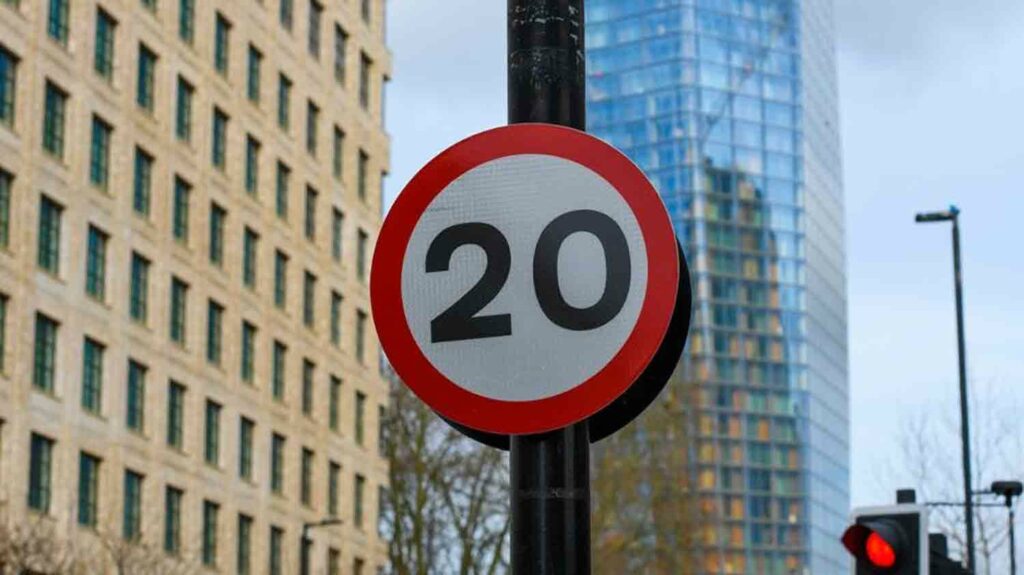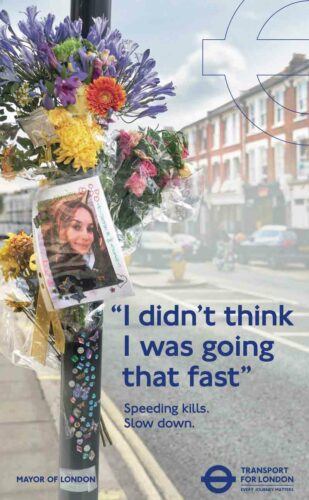
A speed limit of 20mph will be introduced on several major roads in Lambeth that are controlled by Transport for London (TfL) and not the council.
Roads that will be affected include:
- Clapham Road, Kennington Park Road (A3)
- Kennington Lane (A3204)
- Stockwell Road (A203)
- Streatham Hill, Streatham High Road, Camberwell New Road (A23)
- Clapham Common South Side (A24)
- South Circular Road – Thurlow Park Road, Christchurch Road, Poynders Road, Dulwich Common.
The limits are due to come into force in December this year.
They will be accompanied by increased capacity for the Metropolitan Police to prosecute speeding drivers, with the possibility of 1m prosecutions a year in London by 2025.
The Lambeth limits are part of wider restrictions across South London, affecting 65 kilometres of roads in Greenwich, Kensington and Chelsea, Lewisham, Southwark, Wandsworth, Merton, Bromley as well as Lambeth.
TfL said that by 2024, a further 140 kilometres of roads it controls, including 37 town centre locations, will have a 20mph speed limit.
Each year in London, more than 1,000 people are injured or killed by drivers exceeding the speed limit, TfL said.
Lowering speed limits is a key part of the Mayor of London’s “Vision Zero” goal to eliminate death and serious injury from London’s transport network and to enable more walking and cycling in the capital.
At the same time as announcing the new 20mph restrictions, TfL also launched a road safety campaign to tackle speeding.
The speed limits will be backed by new signs and road markings and TfL will with the Metropolitan Police “to ensure that drivers understand and comply with the new lower speed limits”.

Following their implementation, TfL plans to carry out monitoring to determine whether more measures to further reduce vehicle speeds are required.
TfL said data collected in 2022 on roads with 20mph limits, when compared to a similar seasonally matched period before lower speed limits were implemented, shows the number of collisions fell 25 per cent (from 405 to 304), and collisions resulting in death or serious injury fell 24 per cent (from 94 to 71).
“The reduction in collisions resulting in death or serious injury on roads within the central London congestion charging zone should be seen in the context of a London-wide reduction in collisions resulting in death or serious injury of around 10 per cent over the same period,” TfL said.
“Collision data from around the world shows that the speed at which people are driving or riding is the single most important factor in whether a collision takes place and how severely people are injured.
“Around half of the 2022 fatal collisions in London (48 out of 99) reported speed as a contributory factor.”
TfL’s road safety campaign is designed to challenge “socially accepted driving norms” by reframing drivers’ perception of what counts as speeding, particularly on roads with 20 and 30 mph limits.
It aims to “motivate all drivers to change their behaviours by showing them that driving even slightly over the speed limit can still have devastating consequences, particularly on those who walk, cycle and ride a motorcycle and who are the most likely to be impacted by a speed-related collision”.
The new capacity for the Met means London police are on track to be able to take action on 1m speeding offences by 2024/5.
They enforced around 620,000 speeding offences committed in 2022/23, an increase of 35 per cent compared to the previous year.
TfL walking and cycling commissioner Will Norman said: “Data shows that 20mph speed limits are reducing the number of collisions on London’s roads, which is why I’m pleased the programme has been expanded, helping to make a large area of South London safer and more attractive for people to live and work.”
Lilli Matson, TfL’s chief safety, health and environment officer said: “We’re committed to eliminating unsafe speeds across London and our new campaign aims to challenge drivers’ perception of what counts as speeding, as even driving slightly over the speed limit can still has tragic consequences.”





